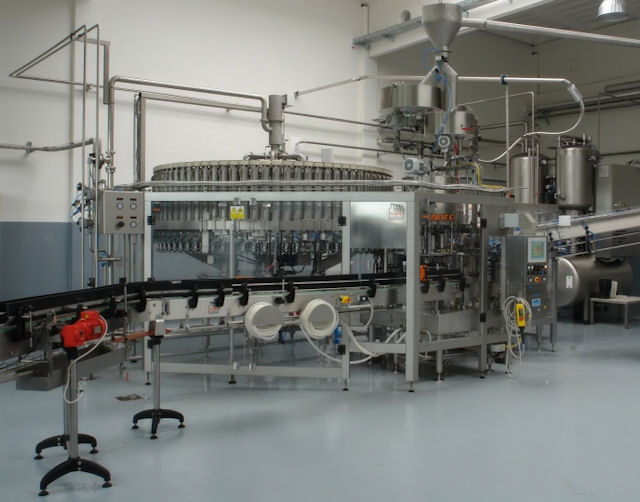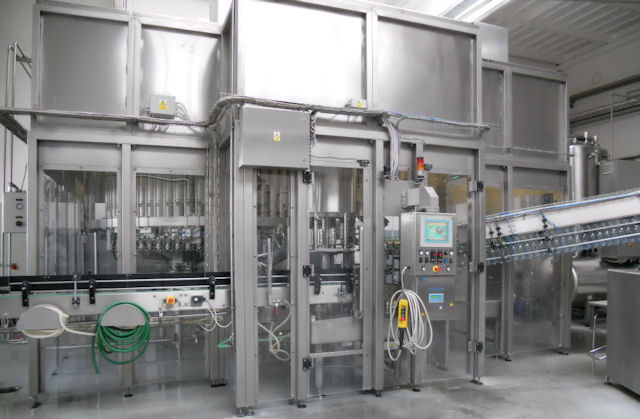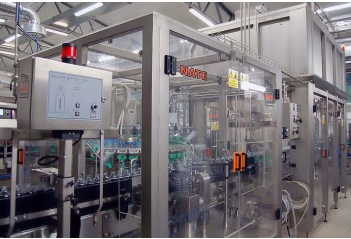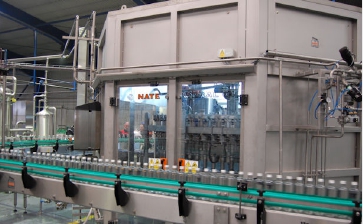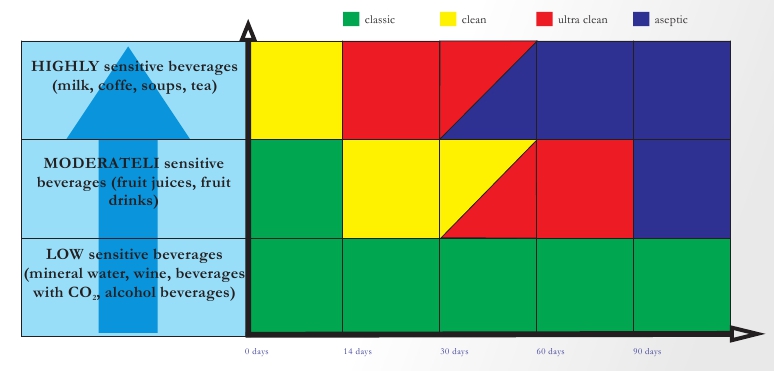
Products
Clean not only from new machines
Improving the cleanability and microbiological cleanliness in oder filling machines:
- Adaptation of the filler tanks in older types - Sanitation fluid drain, adjustment of welded-on pieces for the floater, transducer pressure guage
- Stepless level and pressure control
- Fully automatic sanitation
- Rinsing of filling valves
- Plating of the filler turntable
- Foam cleaning of the filler (manual or automatic
- Guarding for the fillers with air filtration
- Ajdustment of lubrication in crown capping machines
- Transition from oil to grease lubrication
In order to avoid contamination of the bottles, it is also possible to supply conveyor system where the conveors between the rinsing unit and the filler or between the washing unit and the filler are guarded.
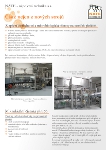 Microbial Cleanliness of Bottle Filling Machines
Microbial Cleanliness of Bottle Filling Machines
Factors affecting the design requirements for fillers:
- Type and sensitivity of the beverages
- Theatment of the beverage before bottling (pasteurization, stabilising agents, etc.)
- Required durability
- Container
- Quality of ambient environment where the bottling machine is located
Sensitivity of beverages is, in addition to their treatment before filling, determined primarily by their acidity value (pH), since the lower the pH value, the lower the sensitivity of thatment beverage.
The lower the pH value, the slower the reproduction of microorganisms. The pH value of 4,5 is considered to be the limit value. Beverages with a pH value of less than 4,5 are called „high-acid beverages”, while beverages with a pH value of 4,5 and higher are considered to be „low-acid beverages”. As the pJ value increases, it is essential to opt for a higher beverage treatment level and a higher cleanliness class fot he bottling in order to eliminate the risk of contamination of the beverages.
The application of the different environments depending on the beverage to be bottled and its requested deurability is shown in the folloving chart.
Filling machines in the particular cleanliness classes differ from one another, particularly in the design of the machine quarding and in the sanitation possibilities, while the cleaning of the different parts of the machines differs in the method of protection against contamination and the possibilities to keep the environment clean.
TO ASK OR ADVICE?
Do not hesitate to contact us

